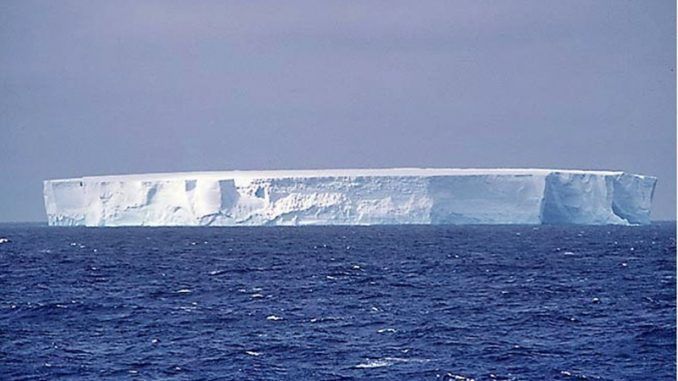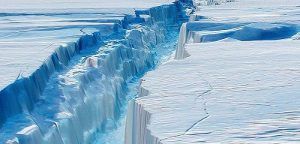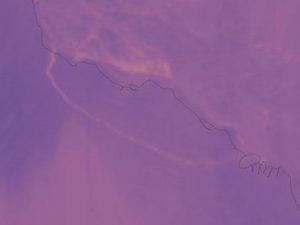
An iceberg weighing over a trillion tonnes has broken away from an ice shelf in western Antarctica.
Covering an area of around 2,239 sq miles (5,800 sq km), the iceberg is one of the largest ever to break off the Larsen Ice Shelf in Antarctica, reducing its size by twelve percent.
The enormous piece of ice is comparable in size to Delaware, quarter the size of Wales, almost twice the size of Luxemburg and four times the area of Greater London.
From 6 July to 12 July, #Sentinel1 caught the final days and eventual full break-off of the berg. #LarsenC pic.twitter.com/2kVVjx4Syk
— ESA EarthObservation (@ESA_EO) July 12, 2017

BYPASS THE CENSORS
Sign up to get unfiltered news delivered straight to your inbox.
You can unsubscribe any time. By subscribing you agree to our Terms of Use
 The Independent reports:
The Independent reports:
A Nasa satellite, which takes thermal images, appeared to show a crack that has been forming for several years had finally broken through and this was confirmed later by other, higher-resolution pictures.
However the berg has not yet floated away from its position, which could be because it is grounded on underwater hills, or because of sea currents and winds.
Writing on the Project Midas website, which covers Antarctic research, scientists said: “A one trillion tonne iceberg – one of the biggest ever recorded – has calved away from the Larsen C Ice Shelf in Antarctica.
“The calving occurred sometime between Monday 10 July and Wednesday 12 July 2017, when a 5,800km2 section of Larsen C finally broke away. The iceberg, which is likely to be named A68, weighs more than a trillion tonnes. Its volume is twice that of Lake Erie, one of the Great Lakes.”
While the iceberg is huge, it is about half the size of the largest one ever recorded, which was 11,000 square kilometres. It broke off the Ross Ice Shelf in 2000 and passed by New Zealand about six years later.
A line showing the original ice edge was drawn on the purple thermal image taken by Nasa, which shows the crack extending in a loop from one stretch of coast to another.
This was later confirmed by a higher resolution image taken by a different satellite.
Smoking gun, the #LarsenC iceberg has broken free! #Sentinel1 sees break through to ocean, and network of cracks in high resolution @BBCAmos pic.twitter.com/v8aegfLiUP
— CPOM News (@CPOM_news) July 12, 2017
The scientists said the iceberg itself would not have an effect on global sea levels as it was already floating on the water.
However it may end up having a considerable impact as its removal could speed up the flow of glaciers from the land into the sea.
“The calving of this iceberg leaves the Larsen C Ice Shelf reduced in area by more than 12 per cent, and the landscape of the Antarctic Peninsula changed forever,” the scientists said.
“Although the remaining ice shelf will continue naturally to regrow, Swansea researchers have previously shown that the new configuration is potentially less stable than it was prior to the rift.
“There is a risk that Larsen C may eventually follow the example of its neighbour, Larsen B, which disintegrated in 2002 following a similar rift-induced calving event in 1995.”
The iceberg could remain where it is – some have been known to stay in position for as long as 20 years – float away into the ocean currents in a massive single block or break up into smaller bergs.
Professor Adrian Luckman, of Swansea University, a lead investigator on the Midas project, said: “We have been anticipating this event for months, and have been surprised how long it took for the rift to break through the final few kilometres of ice.
“We will continue to monitor both the impact of this calving event on the Larsen C Ice Shelf, and the fate of this huge iceberg.
“The iceberg is one of the largest recorded and its future progress is difficult to predict. It may remain in one piece but is more likely to break into fragments. Some of the ice may remain in the area for decades, while parts of the iceberg may drift north into warmer waters.”
Related: El Nino Makes It Rain In Antarctica With Dire Consequences


